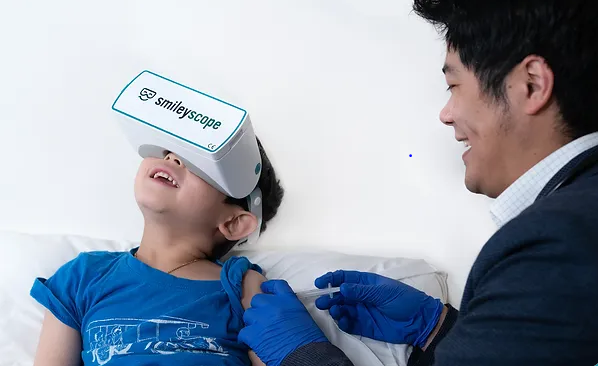
Patients at The Nicklaus Children’s Hospital in Miami, US, who fidget, wriggle, and squirm in the face of a needle will now be able to put on a virtual reality (VR) headset that helps them through the experience.
The Florida-based hospital has implemented Smileyscope Holding’s VR device in what the company calls one of the first rollouts for child medical use in the US.
The global VR market, which, according to a report by GlobalData is forecast to be worth $51bn by 2030, is seeing increased utilisation in healthcare – an emerging use is for the treatment of phobias.
Needle phobia, known as trypanophobia, is a recognised condition that is estimated to affect two-thirds of children. Adults can have the fear too, with the NHS in England rolling out a VR treatment plan to help those receive their Covid-19 vaccinations.
Once put on a patient’s head, the Smileyscope device gives the child a virtual view that removes the negative associations of needles during procedures like vaccines and blood taking.
Australia-based Smileyscope has partnered with more than 40 US hospitals to implement its VR technology. CEO Evelyn Chan told Medical Device Network that the company worked with ex-Disney producers to create the device’s most popular animation.

US Tariffs are shifting - will you react or anticipate?
Don’t let policy changes catch you off guard. Stay proactive with real-time data and expert analysis.
By GlobalDataChan said: “We partnered with ex-Disney producers to create our therapeutic animations where waves wash over virtual arms during antiseptic cleaning and fish nibble when clinicians insert the needle. We patented this technology and called it ‘Procedural Choreography’, in which we substitute real-world negative stimuli for virtual stimuli filled with positive and friendly images.”
Chan added that while paediatric procedural pain is the main application, the company is exploring growth in other areas of healthcare too, such as reproductive health.
Chan commented: “Our goal is to continue to offer solutions to unmet needs within healthcare where medical-specific VR technology can offer a better experience for patients, caregivers, and clinicians.”



